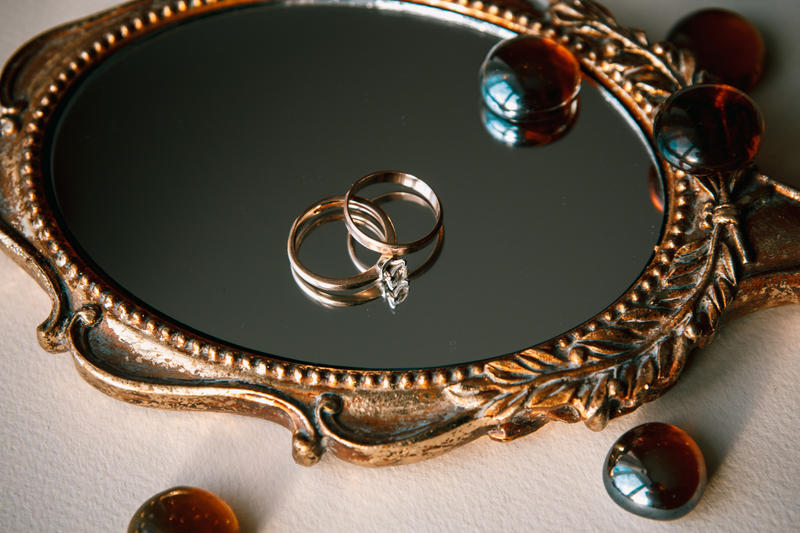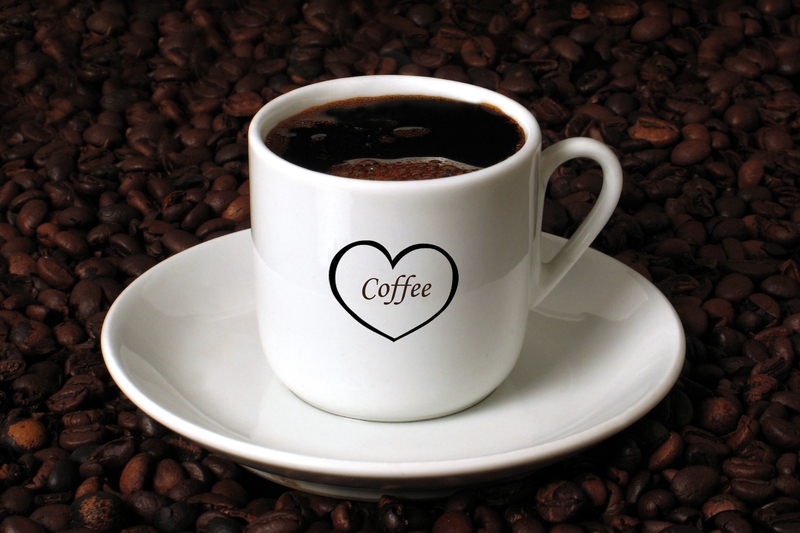Unleashing Hidden Potential in Everyday Waste with Upcycling
Every day, individuals, households, and businesses contribute to a growing mountain of waste. While much emphasis has been placed on recycling, a more creative and impactful approach has emerged in recent years: upcycling. Upcycling is the art of transforming unwanted materials and everyday waste into valuable, functional, or even beautiful items. This innovative practice not only helps reduce landfill waste but also unleashes a world of hidden potential lying dormant within our discard pile. In this article, we'll dive deep into the concept of upcycling, its benefits, creative ideas, and how you can start your own upcycling journey to contribute positively to the environment.

What is Upcycling? An Innovative Solution to Waste
Unlike traditional recycling, which often involves breaking down materials to create new raw materials, upcycling is about reimagining and repurposing existing items to give them a second life. This creative reuse process not only conserves resources and reduces environmental impact but also encourages imagination and artistry. The main goal of upcycling is to add value to everyday waste products--be it old furniture, worn-out clothing, used glass jars, or even plastic bottles--by converting them into items with greater utility or aesthetic appeal.
Upcycling vs. Recycling
- Recycling: Breaking down waste into raw materials to make new products, often involving energy-intensive processes.
- Upcycling: Directly transforming waste into new, higher-value or more useful products with minimal processing.
Put simply, upcycling taps into the inherent hidden potential of unwanted objects, making the most of their existing forms to reduce the footprint of waste.
Why Embrace Upcycling in Everyday Life?
The benefits of upcycling reach far beyond simple waste reduction. It serves as a powerful solution to some of the most pressing environmental and social challenges of our time. Here's why you should consider integrating upcycling strategies into your daily life:
- Environmental Impact: Upcycling reduces the volume of waste sent to landfills, curbs pollution, and conserves natural resources by extending product life cycles.
- Cost Savings: Creating useful items from waste helps save money on buying new goods, furniture, and accessories.
- Creativity and Self-Expression: Upcycling opens the door to unique, personalized creations that reflect individual tastes and talents.
- Community Building: Upcycling initiatives, from local workshops to community swaps, foster a stronger sense of unity and environmental responsibility.
- Economic Opportunities: Upcycling has spawned innovative businesses and social enterprises, creating green jobs and new marketplaces.
By upcycling, you unlock the unexplored value in everyday waste, contributing positively to society while benefitting yourself and the planet.
Popular Types of Everyday Waste for Upcycling
Upcycling can be applied to a wide range of everyday waste items. Here are some of the most common materials and how they're creatively transformed:
- Plastic Bottles: From planters and lamp shades to garden irrigation systems, plastic bottles offer versatile uses after their initial purpose.
- Glass Jars and Bottles: Repurposed as storage containers, vases, candle holders, or even stylish drinking glasses.
- Old Clothing and Textiles: Turned into quilts, cushion covers, tote bags, or even trendy upcycled fashion pieces.
- Pallets and Wood Waste: Reimagined as unique furniture, wall art, garden beds, or shelving units.
- Paper and Cardboard: Used for crafts, gift wrapping, storage boxes, or as material for educational projects.
- Electronics (E-waste): Components salvaged for art, jewelry, home decor, or DIY repair projects.
These everyday objects are just a starting point. With a bit of imagination and creativity, the possibilities for upcycling everyday waste are truly limitless.
Creative Upcycling Ideas to Inspire You
Ready to tap into the hidden potential lurking in your trash? Here are some innovative upcycling ideas to spark your creativity:
1. Upcycle Plastic Bottles into Vertical Gardens
- Cut the bottoms off large plastic bottles.
- Fill with soil and hang them vertically on a wall or fence.
- Plant herbs, flowers, or succulents for a lush, eco-friendly garden.
This not only diverts plastic from landfills but also creates green spaces in urban environments.
2. Transform Old Sweaters into Cozy Throws
- Stitch together squares from worn-out sweaters.
- Add a fleece or flannel backing for extra warmth.
- Use as a blanket or stylish home decor accessory.
This idea makes the most of *unused textiles*, breathing new life into sentimental clothing items.
3. Convert Glass Jars into Decorative Storage
- Clean glass jars thoroughly and remove the labels.
- Paint or decorate the lids for a personalized touch.
- Use for storing pantry staples, craft supplies, or bathroom essentials.
This project showcases the simple beauty of upcycling everyday waste for practical organization.
4. Reimagine Broken Furniture
- Turn an old wooden door into a coffee table or a desk.
- Use dresser drawers as wall shelves or under-bed storage units.
- Paint and update hardware for a refreshed, modern look.
With a little effort, discarded furniture can become statement pieces with stories to tell.
5. Upcycle Electronics for Artistic Flair
- Repurpose circuit boards as wall art or jewelry.
- Transform old CD cases into photo frames.
- Create unique light fixtures using outdated electronic parts.
E-waste upcycling demonstrates the *hidden potential* of technology long after its functional life.
Sustainability and Environmental Impact
The significance of upcycling on sustainability is immense. By reusing materials instead of discarding them, we:
- Conserve natural resources that would otherwise be used to create new products.
- Lower greenhouse gas emissions associated with manufacturing and raw material extraction.
- Protect wildlife and ecosystems by reducing the spread of waste pollution.
- Encourage a circular economy, where products and materials are kept in use longer.
Small actions, like upcycling a glass jar or turning old jeans into a new bag, contribute collectively to lessening our environmental impact. By seeing each piece of everyday waste as a resource waiting for transformation, we actively participate in a more sustainable, responsible way of living.
How to Start Upcycling: Tips for Beginners
Getting started with upcycling is simple--and rewarding! Here's how you can unleash the hidden potential in your own everyday waste:
- Start Small: Choose simple projects that require minimal tools or materials. Upcycling a tin can into a pencil holder or converting old t-shirts into cleaning rags are great beginner options.
- Get Inspired: Browse social media, YouTube tutorials, and Pinterest boards for upcycling project ideas and step-by-step guidance.
- Gather Tools and Materials: Basic supplies such as glue, paint, scissors, and sandpaper can go a long way. Repurpose what you already own.
- Join Upcycling Communities: Connect with local groups, online forums, or workshops to share ideas and resources.
- Spread the Word: Share your upcycled creations with friends and family. Encourage others to embrace upcycling as part of their daily routine.
- Donate or Sell: If you create something remarkable, consider donating to charity shops or selling through local markets or online platforms.
Most importantly, remember that *imperfection is part of the charm*--each upcycled piece is unique, with its own story and character.
Challenges and Solutions in Upcycling Everyday Waste
While upcycling holds immense promise for reducing waste and uncovering hidden value, it's not without challenges:
- Availability of Quality Materials: It can sometimes be difficult to find suitable or clean waste items for projects. Solution: Organize material swaps or collaborate with neighbors and local businesses.
- Time and Skill Constraints: Certain upcycling projects require time, patience, and skill. Solution: Start with easy ideas and gradually progress to complex creations as your confidence grows.
- Societal Perception: Upcycled items may be unfairly viewed as "second-rate." Solution: Showcase the innovation and quality of upcycled products through community exhibitions and social media.
Overcoming these challenges requires ingenuity, persistence, and public awareness. By highlighting the usefulness and beauty of upcycled goods, communities can change perceptions around waste and consumption.
Innovative Upcycling Businesses and Global Impact
The upcycling movement has given rise to an array of innovative enterprises, ranging from small artisan workshops to global brands leading the way in sustainable design:
- TerraCycle: Specializes in hard-to-recycle waste streams, turning them into useful products like park benches, backpacks, and even playgrounds.
- REPREVE: Transforms plastic bottles into high-performance fibers for clothing and upholstery.
- Freitag: Repurposes used truck tarps, seat belts, and bicycle inner tubes into stylish bags and accessories.
- Green Toys: Crafts children's toys from recycled milk jugs and other plastic waste.
These companies showcase how the world's everyday waste can fuel the creation of innovative, desirable products while supporting a circular economy.

The Future of Upcycling: Tapping the Hidden Potential in Waste
As the planet faces increasing pressure from rampant consumption and waste, upcycling stands out as a bright beacon of hope. New materials, such as bio-based plastics and smart textiles, are expanding opportunities for upcycling, while digital platforms help connect creators, makers, and consumers of upcycled goods. Governments and educational institutions are also beginning to recognize the value of upcycling in waste management and curriculum development.
With more people joining the movement, the hidden potential in everyday waste could catalyze a shift towards smarter, more sustainable living. This not only contributes to environmental well-being but also inspires innovation, entrepreneurship, and artistic expression. By adopting upcycling, individuals and communities become part of a transformative trend--one that celebrates resourcefulness and respects the environment.
Conclusion: Unlocking Value in Everyday Waste with Upcycling
Upcycling represents more than just a method for dealing with unwanted materials--it's a powerful tool for personal and community empowerment. By unleashing hidden potential in everyday waste, you're not only reducing your environmental footprint but also fostering creativity and sustainable habits. Whether you're a seasoned maker or just starting your first project, there's never been a better time to look at your "trash" and see it for what it truly is--a treasure trove of possibility.
Start upcycling today, and join the movement to transform the future, one discarded item at a time.
Related Resources and Further Reading
- Upcycle That - Inspiration and guides for creative upcycling
- TerraCycle - Innovative recycling and upcycling solutions
- Repurposed Materials - Industrial-scale upcycling in the USA
- Freitag - Iconic upcycled bags and accessories
Ready to unleash your own hidden potential? Start small, dream big, and help lead the way to a cleaner, more creative world through upcycling everyday waste!